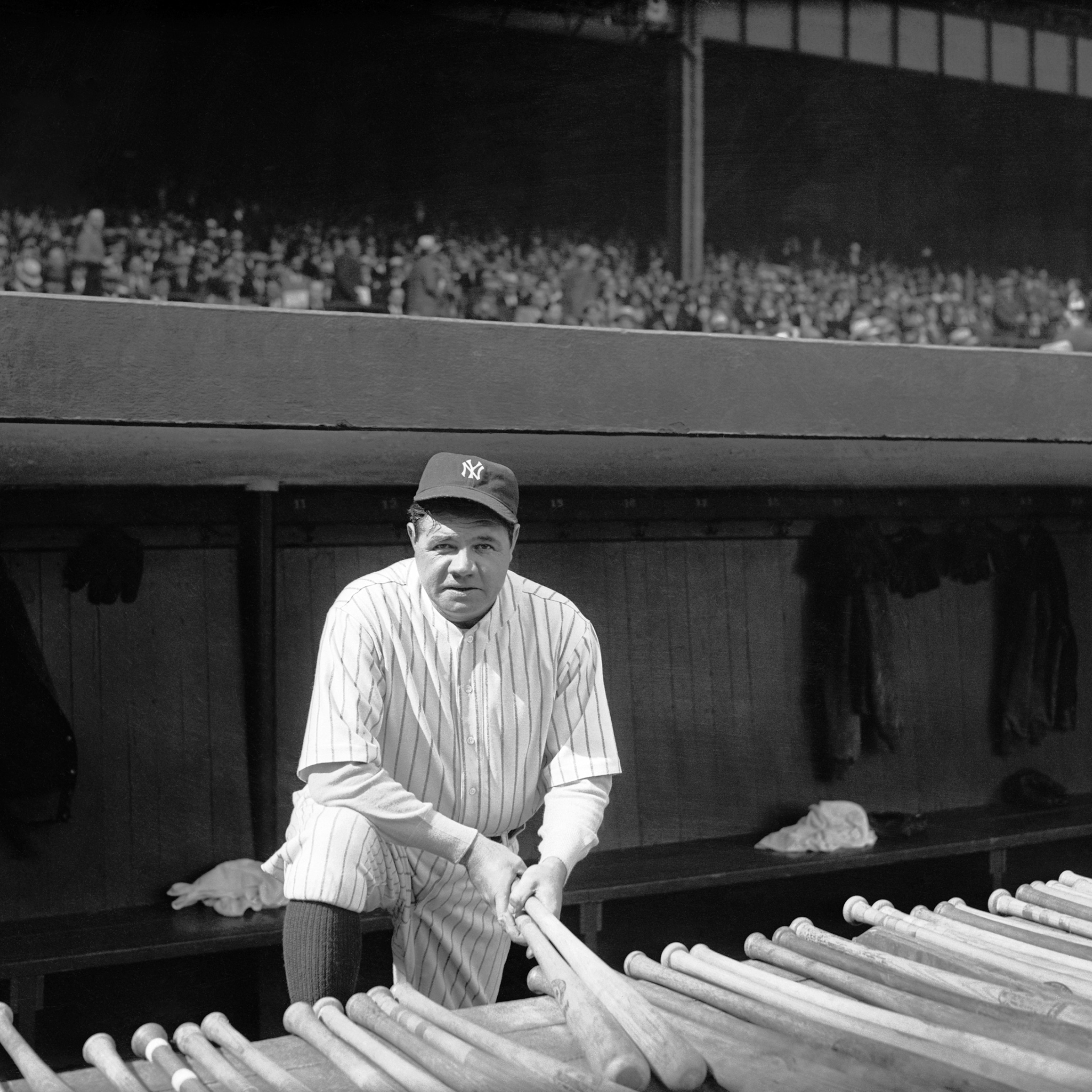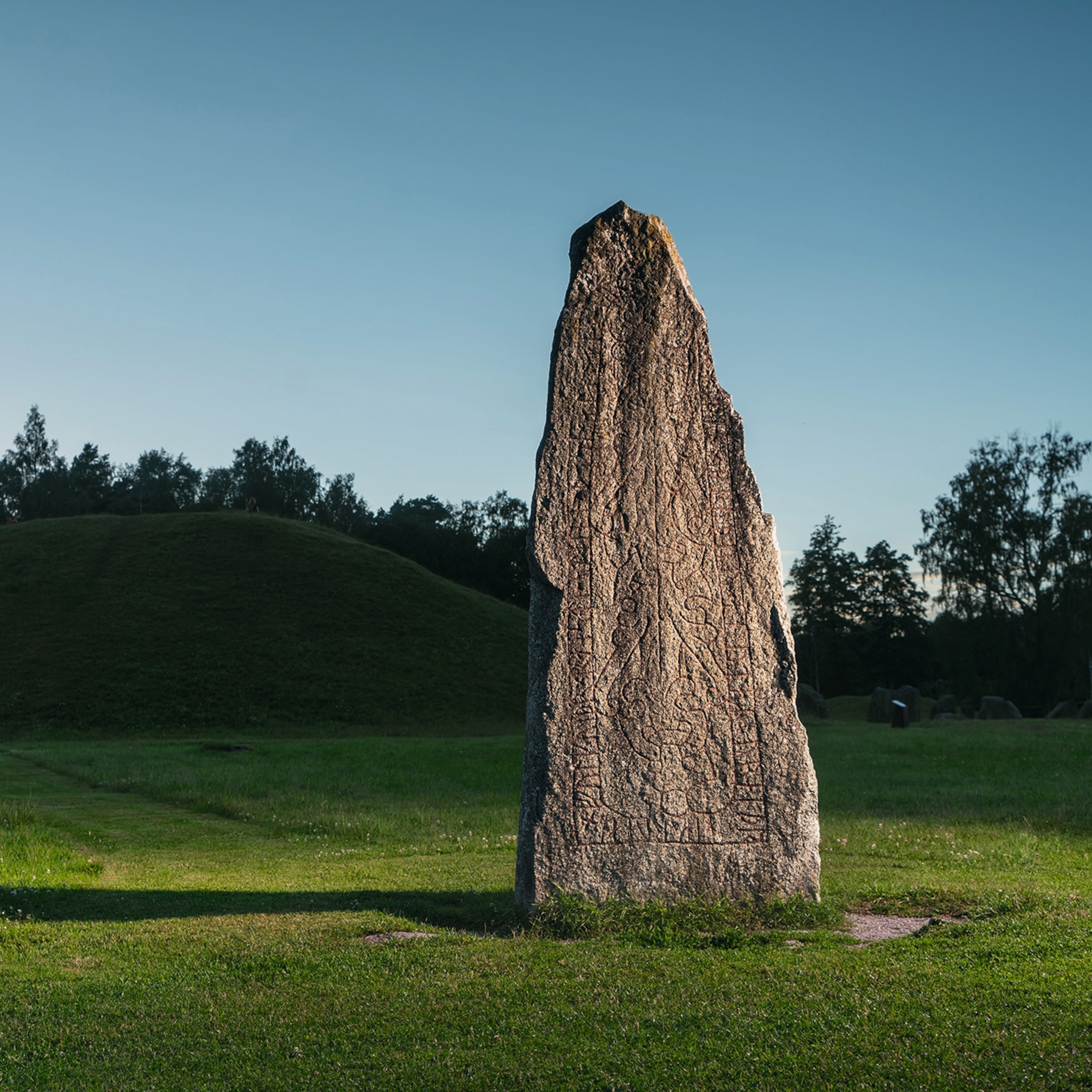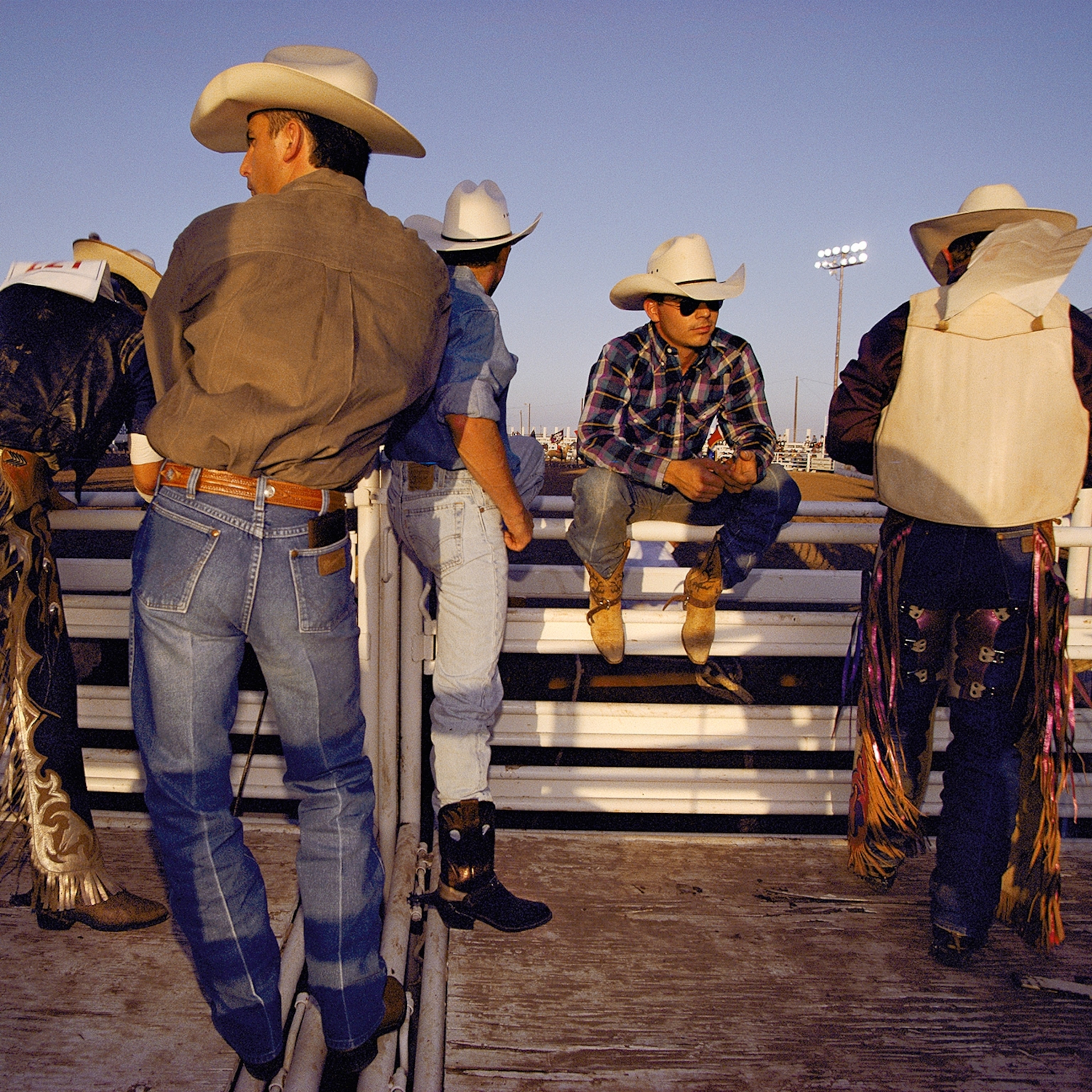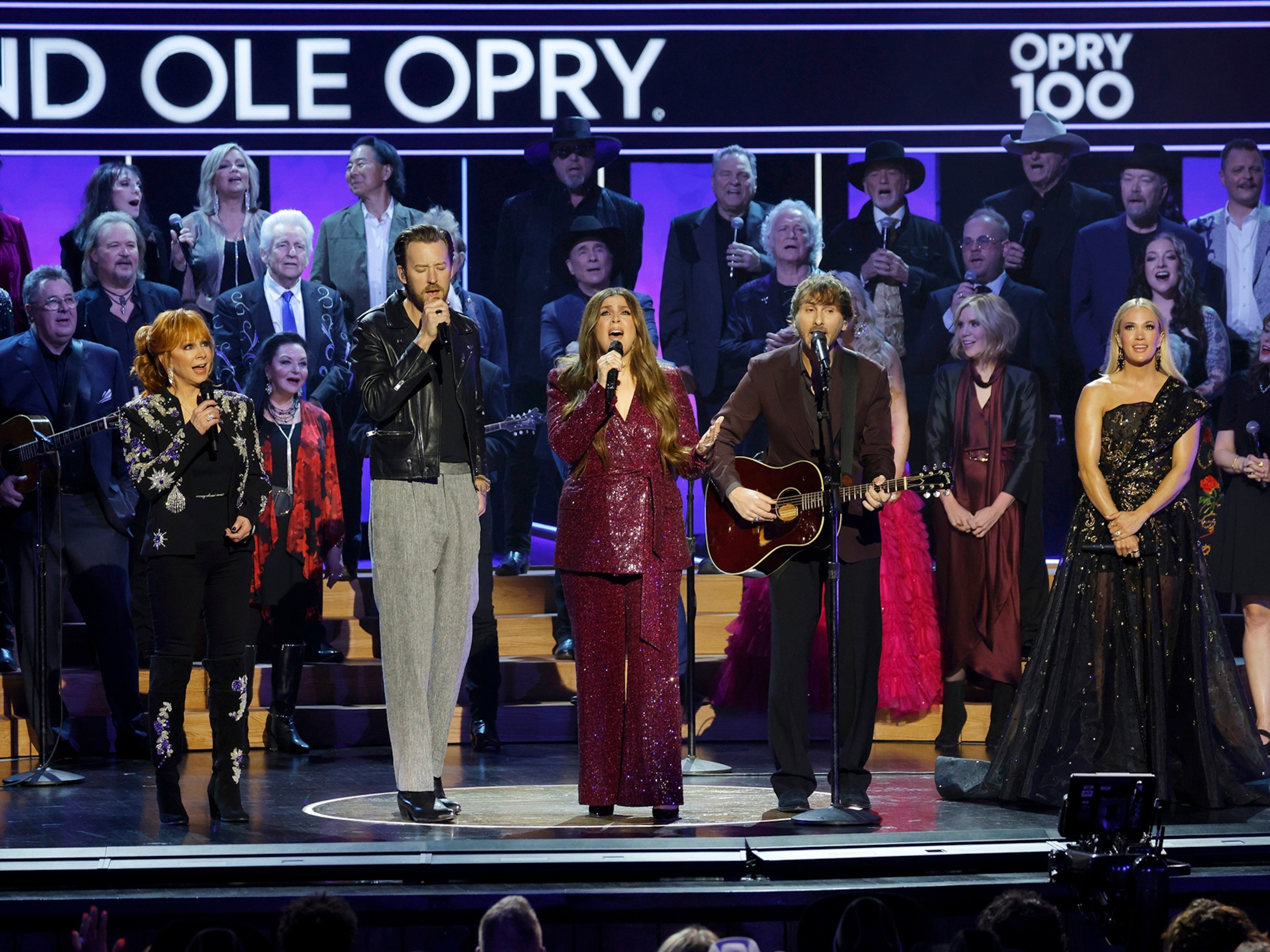
80 years ago, a player made baseball history … an organ player, that is
On April 26, 1941, peals of organ music rang out across a baseball stadium for the first time. Soon the ballpark organist was one of the game’s most valuable players.
The sun is setting behind the left field stands at Dodger Stadium in Los Angeles, and the not-too-distant San Gabriel mountains are disappearing into a purple twilight mist beyond center field. It’s another Dodgers sellout, which in COVID-19 times means just 15,000 of the stadium’s 56,000 seats are filled. Right now they’re chanting “Let’s Go Dodgers” in cadence with the stadium organ, urging the home team to prevail over the visiting Colorado Rockies.
But I’m not really here to see the newly crowned World Champions do battle. The crack of the bat, the thud of a 97-mph pitch in the catcher’s glove, the boos that accompany every close strike for a home team batter—all these are just background noise to what is, for me, the main event: the sound of the Dodger Stadium organ, full-throated and insistent, urging the Blue to victory.

Baseball is a game of tradition and record keeping, and this year marks a particularly nostalgic milestone: Eighty years ago this April 26, at hallowed Wrigley Field in Chicago, the strains of organ music drifted across a professional baseball field for the first time. Cubs owner Philip K. Wrigley had installed a pipe organ behind the grandstand, and by all accounts the crowd of 18,000-plus was thrilled by the performance of organist Ray Nelson.
But the premiere was not without complications. Before the game started at 2:30 p.m., Nelson had to “still his bellows,” as the Chicago Tribune put it, because the game was being broadcast on the radio, and the team had not gotten permission from the music publishing company BMI to perform their songs on-air. This prohibition even precluded Nelson from tossing off the Cubs’ team song at the time, a little Irving Berlin ditty called “When That Midnight Choo-Choo Leaves for Alabam.”
The Tribune urged readers to send the organist “any number you’d like to have rippled off some afternoon.”
Tonight, the Dodgers’ present-day organist, Dieter Ruhel, is rippling off his nightly assortment of “charge!” fanfares, full-length musical interludes (The Doors’ “Touch Me Babe”), and dozens of song fragments like The Beatles’ “While My Guitar Gently Weeps” and Stevie Wonder’s “Sir Duke,” all of which inevitably morph into the sing-song chant of “Let’s Go Dodgers (clap, clap, clapclapclap)!”
Unlike stadium organists of yore, who were strictly one-man or one-woman bands, these days baseball keyboardists share the game with DJs, whose encyclopedic array of song samples demand spectator collaboration. (The opening claps of Rose Royce’s “Car Wash” are a universal choice, as is DJ Casper’s ballgame and wedding reception standard “Cha Cha Slide”—specifically the part that goes “Everybody clap your hands!”).
Playing the organ—and the crowd
The Dodgers have fallen behind 5-3, and Ruhel is playing both the organ and the crowd like a master. Dodgers slugger Max Muncy is at bat with two men on base. “Let’s Go Dodgers!”—Ruhel’s two-note theme and the fans’ reflexive chant—is echoing through the cavernous stadium. As Ruhel raises the organ’s pitch a half-step each time, the chant becomes something akin to a call-and-response prayer.
As the pitcher goes into his set, Ruhel abruptly ceases playing—that’s the rule—but he’s unleashed an unstoppable tsunami. The chant continues. Muncy swings. The ball lifts into the air, a spherical white Sputnik in the dark night sky. The right fielder runs to the wall, stops, and slaps his glove in frustration as the ball sails into a delirious sea of screaming bleacher bums. Dodgers up, 5-4.
This is where the DJ takes over, and some indecipherable, pounding victory theme thunders from the stadium’s speakers. In olden times the organist would have celebrated solo with a jaunty tune. But that was long ago, in a baseball universe far away. (See how baseball is played around the world.)
For reasons not clear, that first organ at Wrigley Field had disappeared when the Cubs returned from their next road trip. Not until 1967 would organ music return to a Cubs home game. But the experiment did not go unnoticed. Some 800 miles away, in Brooklyn, New York, it was music to the ears of Dodgers President Larry MacPhail.
New York already had an established sports event organist. Gladys Gooding played for both hockey’s Rangers and basketball’s Knicks at Madison Square Garden. At MacPhail’s invitation, Gooding added the Dodgers and Ebbets Field to her resume. For the next 16 years, until the Dodgers moved to Los Angeles in 1958, Gooding was the undisputed musical voice of New York sports.
“And not just on the organ,” adds Mark Langill, the Dodgers’ staff historian. “Gladys would also occasionally sing the National Anthem.”
Langill comes to his position honestly. He grew up in LA loving the Dodgers—and also the music of their 1970s-80s organist, Helen Dell. At his desk in his home office, he proudly displays a 45-rpm disk: “Helen Dell Plays Baseball.”
“I do believe my sister Sally is still having therapy over this,” he laughs. “She had to hear it practically every day of her childhood.” Langill’s baseball music collection also includes a 78-rpm World War II-era “Victory” disc on which Gooding introduces an organ medley with a dedication to “our beloved Bums, the Brooklyn Dodgers.”
Vin Scully, the legendary play-by-play man who announced Dodgers games for 67 years, tells of Gooding’s final bow at the team’s last game in Brooklyn. Fortified with an elixir she’d brought in a brown bag, an embittered Gooding locked herself in her booth and played funeral dirges the entire game.
The game’s greatest hit
It’s the seventh inning stretch at Dodger Stadium—every ballpark organist’s shining moment, when he or she gets to lead the assembled congregation singing hymn number one in the baseball psalmody: “Take Me Out to the Ballgame.”
Every organist has a signature take on the song—written in 1908 by a guy who’d never set foot in a ball park. Ruhel plays it twice, so by the time the crowd repeats “One…Two…Three Strikes You’re OUT!” the umpires are ducking for cover. Cubs announcer Harry Caray will forever be remembered leaning precariously from the Wrigley Field press box and leading the crowd in the song. But he started the practice when he was an announcer across town with the White Sox, inspired by the thrilling, trilling rendition performed by longtime organist Nancy Faust. (Here's how the first pitch became baseball's Opening Day tradition.)
For sheer hair-on-the-back-of-your-neck baseball geek chills, though, I’d suggest you go right now to YouTube and search “Vince Lascheid, Pittsburgh Pirates.” The long-time Pirate immortal’s rendition of the song—an all-stops-pulled fantasia of frills and runs, an explosion of shameless exuberance—explains why, more than 10 years after his death, Lascheid is still the Pirates’ official organist. His keyboard exploits, digitized for all time, are played at every game.
Tricks of the trade
The real explosion in ballpark organ music came, unexpectedly, in the 1960s and early ’70s, when rock and roll was the coin of America’s musical realm. The Chicago White Sox christened their keyboard in 1960 and have played it ever since, giving the team baseball’s longest uninterrupted organ tradition. Meanwhile the Dodgers, after four years of organless play at the Los Angeles Coliseum, reintroduced the instrument at their new stadium in 1962. The Cubs, who started it all, finally got back on board with a keyboard in 1967. Their organist, Gary Pressy, didn’t miss a single game from 1987 through his retirement in 2019, establishing a longer consecutive baseball streak than Cal Ripken’s.
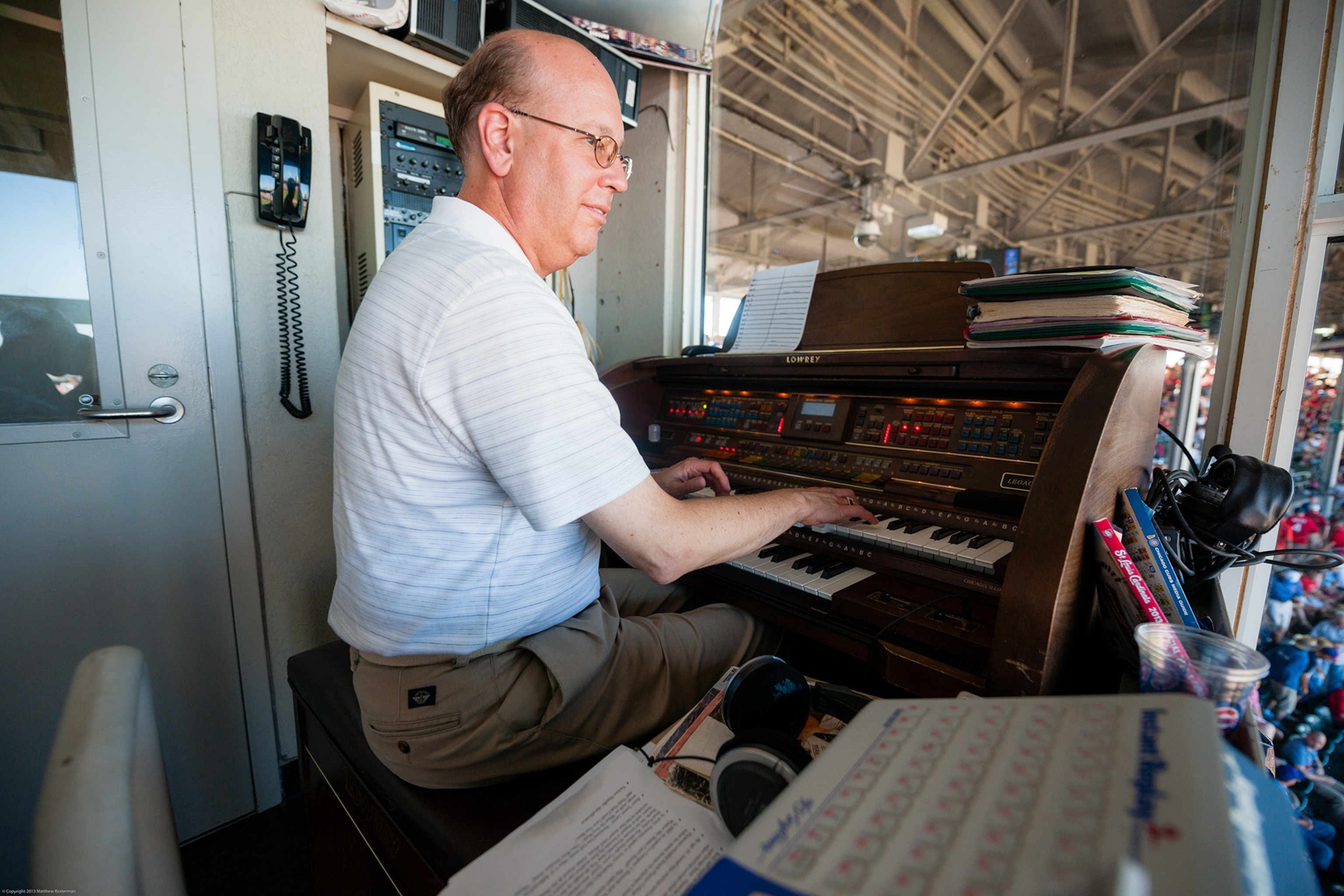
Perhaps to recapture some of that old Dodger magic, the team that replaced them in New York, the Mets, installed an organ in brand new Shea Stadium in 1964. Not to be outdone, the following year the New York Yankees introduced their magnificent 20-drawbar “Colonnade Organ,” soon played at each game by already-famed keyboardist Ed Layton. Legitimately or not, Layton claimed to have originated the “charge!” organ riff. It is undeniable, however, that when Yankee Alberto Castillo finally broke a 0-for-14 hitless streak in 2002, Layton laid down a rousing rendition of “The Hallelujah Chorus.”
Knowing what to play, and when, is the baseball organist’s most potent trick of the trade. Faust, the White Sox organist, will forever be credited with first performing Steam’s “Nah-nah-naah-nah, Nah-nah-naah-nah, hey-hey-hey…Goodbye” riff when opposing pitchers were knocked out of games. On the other hand, such a taunt would be entirely too cruel for the taste of genteel Nancy Bea Hefley, the Dodgers’ longtime organist until 2015.
“If we were playing San Francisco and their pitcher was pulled,” Hefley recalls, “I’d play, ‘Do You Know the Way to San Jose?’”
An aficionado of the Great American Songbook, Hefley says, “I knew about 2,000 songs off the top of my head. And if I didn’t know someone’s request, I’d head out to the hallway, find it on ITunes, and listen to it once. Then I’d be able to play it.”
During a pitcher’s mound conference, she’d play “Happy Talk” from the movie South Pacific. A home run might elicit a rendition of “Sing Halleluja” from the musical Anchors Aweigh. If the Dodgers won a game, Hefley would play the triumphant show tune “Step to the Rear,” and after a loss fans would slink from the stadium to the strains of “Beyond the Blue Horizon.”
Sometimes, a ballpark organist’s split-second song selection appears to be half genius, half muscle memory. New York Yankee organist Ed Alstrom recalls the day in the old Yankee Stadium when a groundskeeper’s door, embedded in the outfield wall, suddenly blew open. The game had to stop while the door was secured, and Alstrom got the signal to play something…anything.
“I had a lightning bolt,” he says. “I just started playing ‘Break on Through (To The Other Side)’ by the Doors. It was one of those things. Both the name of the song and the name of the group were just perfect.” (Study suggests sleep preferences can predict baseball success.)
The wrong song, however, can earn you a page in infamy, as Hefley discovered in 1989, the year Los Angeles Lakers basketball great Kareem Abdul-Jabbar was making his farewell tour.
“They were showing a video tribute to Kareem between innings,” she recalls. “But I couldn’t see the screen, and at that moment I just happened to decide to play ‘Bye, Bye Blackbird.’”
That’s the sort of miscue that today would be good for a week of cable news evisceration, but the beloved Hefley came through with just a gentle reprimand.
“Although I must say,” she adds, “for a long time the DJ I worked with would ask, ‘Hey, Nancy—do you know ‘Bye Bye Blackbird?’”
The Rockies make things interesting with two base runners in the ninth inning, but the Dodgers prevail, 7-5. With the final out the DJ is in his glory, first with a poundingly victorious music track, then with the victory staple, Randy Newman’s “I Love LA.”
The game, and the music, are through for the night. A breeze bounces off the green outfield and pushes up to the top deck, as if the stadium itself is ushering the fans toward the exits.
An organist’s rendition of “Step to the Rear” would be nice right about now. But that’s just me.

